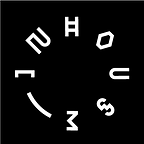Three Reasons Creative “Passion Projects” Add Value for Clients
As providers of design and creative services, we’re constantly sized up for client projects. But we also frequently find ourselves at the other end of the table, looking for talented folks for our own projects or as partners to build solutions.
As clients, we’ve done our fair share of portfolio reviewing and research. Back in the day, we regarded passion projects simply as a student affectation, or eye candy from creatives who wanted to let off some steam.
As the team has grown, we’ve learned that professional creatives with passion projects disproportionately deliver value beyond the brief.
Now, back to our “design and creative providers” role, as we’ve adopted the practice internally, we’ve been able to learn why this tendency is so strong. Whether it’s participating in an Instagram challenge or developing an independent concept, finding a robust self-generated project roster is a strong symbol of value.
They Build Skill and Agility
This one’s a gimme: passion projects are opportunities to learn and test new skills, techniques or approaches efficiently.
It’s similar to learning a new word; it helps to use it in a sentence or five soon after first coming across it for the first time. At In-House, Lope Gutiérrez Ruiz came up with a continuous learning approach he calls “quiver” (as in the holster for arrows or surfboards) that works like a matrix-remix bingo. There are techniques on the X axis and applications / media on the Y axis. Every week, team members work through at least one intersection. It’s developed an amazing sense of capability and confidence in the whole design team.
We also help each other master new techniques by providing a visible venue to apply those new techniques. Visibility is important, it makes the challenge real.
There are near-infinite ways to draw a window, but it is only through practices in perspective, layout, color, negative space and a million other things that a designer can truly find a novel way to do it. Internal projects provide specific challenges for creatives to work with extremes.
In every client-services practice, time is the precious finite resource that limits us. Internal challenges and projects are not void-filler for when there’s “extra time” (whatever that means). They keep us in fighting creative shape by forcing us to constantly solve design and creative problems in novel ways. In expanding our skill set and adding to our creative responsibilities, we develop not only expertise but speed.
Value to Clients: Versatile creative teams that are used to rising to the challenge with creative confidence and speed.
They Build Relationships (and Keep Us Current)!
Imagine now that you’re looking to hire a critic to write about music. Clearly, you want someone who’s abreast of what’s current and clear on the genealogy that brought us to the current moment.
Often, it seems there’s a tradeoff between being current with the cool kids (read: young and fresh) and being experienced (read: skilled and nuanced). Passion projects increasingly happen in waves and movements — and in waves of Instagram hashtags like #Homwork #GoodTypeTuesdays or #36DaysOfType
These challenges regularly have people contributing their own takes on the challenge, but also provide an amazing window into the state of the art. They build stamina — of these things are sprinting marathons, y’all — but they also inspire us to get out of our comfort zone and try completely new things. Collage artists try their hand at lettering, illustrators dip a toe into motion graphics, and in the cross-pollination of skills, entirely new styles are born.
Participating on these types of challenges also give us a means to build community. We’re not only in touch with what’s at the cutting edge, but connect with people who are inventing tomorrow.
Value to Clients: A creative team that’s current and experienced — and that’s cultivated relationships with creatives who may be potential collaborators.
They Improve Our Processes
My mother used to say to me that the people who are the busiest also seem to have the most time. In my drowsy teenage years I generally took that to be code for “get up earlier”, but I now recognize the wisdom in it.
Executing internal projects takes discipline and purpose, of course, but it also demands continuous process improvement so that everything gets done.
For external collaborations, working on fun passion projects with would-be project collaborators means optimizing logistics of working with outsiders in many many time zones and life circumstances.
For projects executed within our team, it motivates us to find ways to organize our time better, incentivizes project ownership, and develops efficiency of process all at the same time.
Value to Clients: efficient processes means competent service and time spent on the work rather than the stuff that makes work possible. It means faster results, more sophisticated production, and lower overall fees to you.
Internal studio projects are an essential investment in our skills and processes that benefits clients and creatives alike.
Finally, internally focused projects create a massively creative culture. On an individual level, it forces each of us to grapple with ownership: in the absence of an external authority, the creative onus is on you.
I’d wager most creative people struggle more under this kind of pressure than within the narrowed, managed parameters of client work. Practice in this format trains each creative to do work under the pressures of creative autonomy.
For creatives, the rewards are threefold: a renewed love for clients, improved creative confidence and a fresh perspective on how to best manage the highs and pitfalls of creative work. It’s a win-win. Or is that a win-win-win?
So when you’re next looking for amazing creative work, consider the value of independent, just for fun projects in their portfolio.
Pssst… like what you read? Sign up to our newsletter and get a breakdown of good things in design and creativity delivered monthly! ❤
